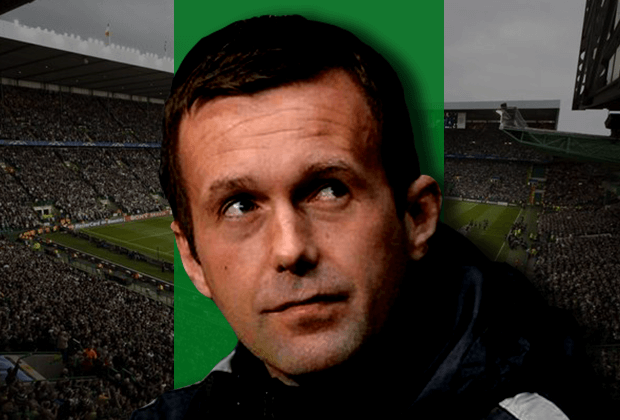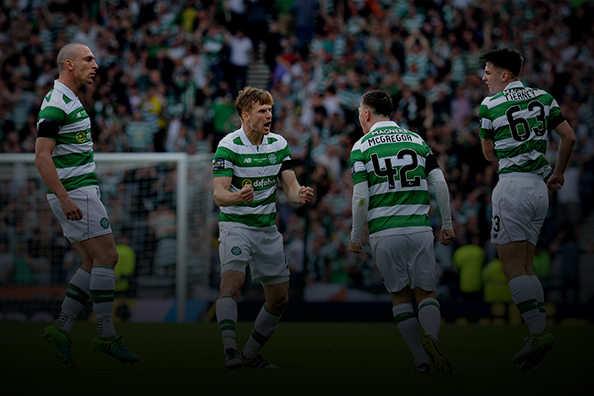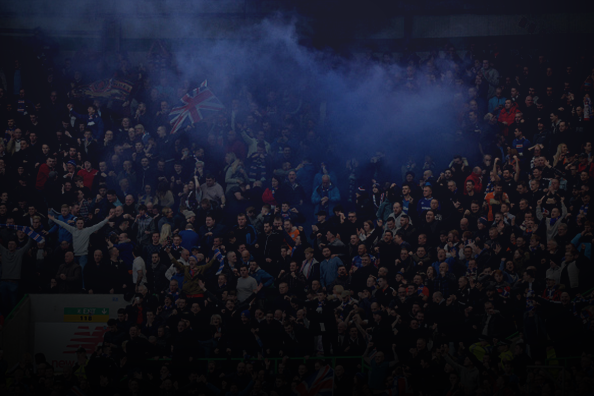While this website has made its name focusing on the lesser known youth of this beautiful sport, and combined it with a tinge of tactical flavour meant for the football enthusiast, we found a large gap to be exploited in terms of combining the two. This mini-series thus focuses on young managers (below the age of 45) and their tactical philosophies, deriving what got them here and where they could go. In this part, Jack Wilson looks toward Celtic, and their young gaffer, Ronny Deila.
Background
Coming from a less attractive footballing country in Norway, Ronny Deila was a surprise to many Celtic fans across the world. However, he did have success to back up his managerial ability. Starting off in management at Stromsgodset during the 2007/2008 season, his team struggled against relegation.

This was later overshadowed by winning the Norwegian Cup in 2010 and later becoming champions of Norway in 2013. Gaining attraction from European clubs, Deila was eventually appointed as manager of Celtic in June 2014.
Tactical Philosophy
Formation: 4 – 2 – 3 – 1 general overview

Attacking Principles: Attacking three behind the striker
In more than one way, Celtic seems like a club Deila would fit into comfortably with time and patience. One reason in particular is the quality of opposition Delia’s men will come up against. With the poor opposition and a strong attacking philosophy it wouldn’t be long until they click together and Delia’s critics sway in the other direction.
Celtic more or less play a fluid 4 – 2 – 3 – 1 formation every game, allowing a lot of creativity and freedom in the final third. This mainly comes from the attacking three who played behind the striker. These positions and Celtics attacking play was rejuvenated after the January transfer window from the signings of Gary Mackay – Steven and Stuart Armstrong from Dundee United. Leigh Griffiths, the main striker during the second half of the season had an exciting job playing in front of two players with high game awareness and strong creativity levels in Stefan Johansen and Stuart Armstrong along with Gary Mackay – Steven who is a pacey out and out winger with great technical ability.
In order to live up to his philosophy of fast, attacking football, Deila needed the correct players to do so – and what a shrewd piece of business in January to gain the final pieces to his jigsaw.
One way these three players create goal scoring opportunities is through intelligent movement. Certain movements such as the wide players moving inside to receive the ball in the ‘pocket’ has created many a crossing opportunity for Celtic as it allows the fullback to receive the ball higher up the pitch.
This combination of movement has to be executed perfectly in order for there to be an opportunity at the end of it. As one of the two holding midfielders – usually Scott Brown and Nir Biton – identifies one of the wide players moving inside the ‘pocket’, it is when the ball is released that the full back begins to go high. If this player goes too early he will be in front of the ball, if he goes to late the defender will win the ball and he’ll be in a poor defensive position. One player who has a key decision to make in this combination is the wide player. If the defensive full back doesn’t follow him, he can link up with the strikers or have a shot a goal as there is loads of space to take advantage of. If he is followed, it is the prime opportunity to play behind the defensive full back for the high fullback to run onto.
Along with the two wide players in the attacking three, Celtics most important player this season played as the NO.10. This being the creative Norwegian Stefan Johansen. The SPFL player of the year showed great qualities throughout the season. The main reason being Delia’s smart tactical thinking of where to play Johansen. It is clear he has immense game intelligence and with a good technical ability, Celtic have a player who they will struggle to hold onto for another few seasons if he continues to perform at the same level.
Johansen is a major threat for many opposing defenders because of the rotation with the other two attacking midfielders. Essential to a fluid front three is the understanding of one another’s movements and next action. By constantly moving into different areas and rotating positions with one another it causes defenders to get dragged about and create more space high up the pitch, and when playing a team of Celtic’s quality it is something you don’t want to be up against. The photo below is a prime example, James Forrest (RAM) has dropped low and Johansen (NO.10) has moved into the right sided ‘pocket’ – therefore taking advantage of dangerous space with no defender tight.
Defending Principle: Structured Pressing
As Deila encourages his team to play fast attacking football, an effective way of winning the ball back would be through intense pressure. If the ball is high up the pitch, it is important to win the ball in that area to resurge a new attack close to the opponent’s goal.
To do this effectively the team have to be in a tight compact shape to prevent space and gaps for the opponent to play through. After conceding sloppy goals at the start of the season, Deila’s side gained a better understanding of how to hold an effective shape in order to win the ball back from their opponents.
As we see from the image above, Celtic’s structure is effective enough for the ball to go backwards and make Aberdeen’s possession less dangerous. One way in how this is a strong structure and press is from the awareness of Johansen to be ready to step up and press the closest passing option. Along with Johansen, Scott Brown and Nir Biton are in accurate positions in case the ball is played through second press. If it is and they win the ball, they are in a strong 2v1 position in the midfield third to start a counter attack with four players higher up the pitch. John Guidetti is also contributing – even though he is in front of the ball – because if the ball is played back to the defence, he is there to press for the ball again.
Three career defining games
10th November 2013 – Stromsgodset 4 – 0 FK Haugesund: With it being the last day of the Norwegian league season, Deila’s side calmed their nerves to secure their first league title in forty – three years. Considering Stromsgodset were a team who were struggling for survival a few years beforehand, it was clear the individuals within the team bought into Deila’s methods, resulting in success.
Sunday 1st February – Celtic 2 – 0 Rangers (Scottish League Cup Semi – Final): This result was a clear favourite among the green half of Glasgow. As it was the first Glasgow derby – the biggest derby in Scotland – since Rangers were demoted to what was then the Third Division. Deila’s Celtic pleased their fans for getting over their fierce rivals. Goals from Leigh Griffiths and Kris Commons respectively secured the win for The Hoops on a poor Hampden pitch.
Sunday 15th March – Dundee United 0 – 2 Celtic (Scottish League Cup Final): As this was the first trophy up for grabs during the Scottish football season, it was an important result for the Celtic fans to recognise that Deila’s methods may actually be effective in bringing success to Celtic for many years to come. It also put his side in good stead for a possible historic treble.
Three key players developed
Martin Odegaard: Deila had given Odegaard his first team debut at only the young age of thirteen. This shows he has a smart eye for young players who have a lot of potential to offer. He was offered his professional debut for the first team two years later at only the age of fifteen. It is clear Deila had a massive impact on putting Odegaard on the map for other professional clubs as he experienced many trials across top European clubs, eventually signing for Real Madrid on an eighty thousand Euros a week contract.
Stefan Johansen: Within his philosophy, Deila requires a creative player who has a strong cabinet of attacking and defensive qualities. Johansen fits this requirement perfectly. When playing as the NO.10 – player behind the striker – it is clear Deila has contributed to the development of his game in his system. One example is that he won Scottish Player of the Year for the 2014/2015 season.
Jason Denayer: In order for the ball to go from the goalkeeper to higher up the pitch, Deila required two centre backs with qualities similar to those of a central midfielder. He found these in a young centre back called Jason Denayer who was on loan from Manchester City. This is another example of his eye for young talent. Deila gave Denayer a different experience by playing in a different country. His performances were impressive, resulting in him making his debut for Belgium in the Euro 2016 qualifier campaign.
PREVIOUS ARTICLE
NEXT ARTICLE





























































